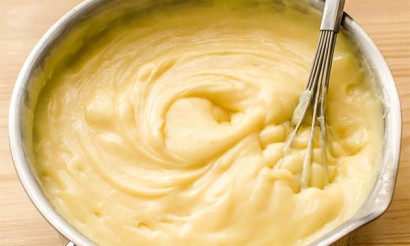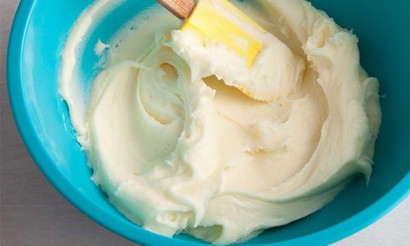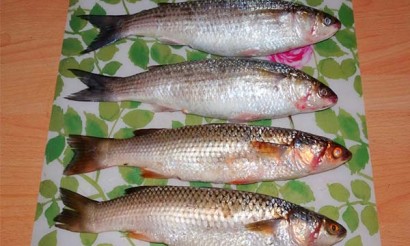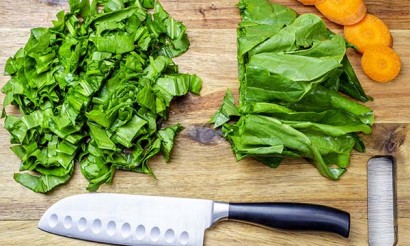Is it possible to eat lard with diabetes
Lard is a very specific dish, with some diseases it is worth removing it from the diet altogether. Does diabetes include in the list of such diseases? It is impossible to give an exact answer, but there is something to discuss.
The incidence of high blood sugar levels is increasing. The patient comes to the doctor with complaints of frequent trips to the toilet, thirst, absent-mindedness, and a constant desire to sleep. Sometimes even dizziness, numbness in the extremities, and worse skin. To answer the question posed earlier, you need to know the type of diabetes - first or second.

Speaking of lard, we mean rolls, smoked, breast, salted types. Not every kind of lard can be harmless in diabetes. It should be understood that at the heart of all lard is fat. The caloric value of the product is extremely high - about 800 calories. The fat is so concentrated that it makes up nine out of ten parts of lard. If you need to choose as least caloric lard as possible, you should look for the product with the largest meat layer. Analysis of the composition will help to understand whether you can eat lard with diabetes.
There are two types of diabetes in total.
Since this article will quite often mention the types of diabetes, it is worth to begin with a more detailed description of them.
The first type is very severe and is inherited. The first signs show themselves at an early age or during puberty. Suddenly, blood glucose rises sharply and the patient is immediately taken to the hospital, where he gets a dose of insulin.
In type 2 diabetes, there is no problem with insulin production, but the glucose simply does not reach the cells and over saturates the blood. This type of diabetes may not be noticed immediately, because there are not always as pronounced symptoms as with type one.
If there are symptoms that indicate the presence of diabetes, you should see a doctor urgently. He, in turn, will tell about certain restrictions, if the diagnosis is confirmed. The doctor will certainly mention such controversial products as lard, but, in general, the answer to the question can be obtained in the next part of the article.
The Composition of Lard
Lard consists of saturated fat, sodium nitrite, and salt. Each type of lard contains salt in its composition. Nitrites knock down the beta cells in the pancreas. Saturated fats lead to rapid weight gain, which should be avoided in type 2 diabetes, when lipid metabolism is disturbed.
The patient must adhere to the main rule, that is - to exclude sugars. For the most part, lard consists of fats, we can say that there are no carbohydrates in it at all. This means that sugar is also negligible. So, the product will not harm people with high sugar levels.
Diabetics of every type can eat lard, the main thing is to observe moderation, because no one cancelled their diet low in carbohydrates and natural fats.
Do you have to restrict yourself?
There are no special bans on lard for diabetics. However, if we take into account that the second type is prone to rapid weight gain, we can understand that fat is not such a harmless product for them. For the first type, there are no restrictions at all. Doctors say that 20 grams of lard a day will do no harm to anyone.
For a type 2 diabetic, it is typical to constantly control the foods consumed during the day. Lard is acceptable in his diet, but without salt and bread. Some doctors say that lard should even be included in the diet of a type 2 diabetic, but without various condiments, because they can increase blood sugar levels. It takes not a little time for lard to be fully digested, and a couple of grams of sugar do not enter the bloodstream at once. Suitable are such meals with lard: broth, salad, and a bunch of greens.
Restrictions on lard
Still, there are exceptions when diabetics are not allowed to eat this product at all. Often people miss the recommendations of doctors and suffer as a result. The main recommendations:

- Each type of diabetes excludes lard with bread and alcohol if the products enter the body together.
- Lard with high salt content is detrimental for diabetics.
- Various seasonings, highly concentrated and spicy, are added to some types of lard. Such types of product should also be excluded from the diet of a diabetic.
- Smoked and fried types are also prohibited.
- Boiled species should be excluded, lest they say they are harmless.
Thus, in order for the product to be consumed, special conditions must be met. Much has been said about what types of lard should be avoided in different types of diabetes, now we can tell you in what form lard can be eaten without harm to health.
Salted lard should be excluded because it:
- Leads to a decrease in immune resistance;
- causes blood pressure spikes;
- Disrupts the work of the pancreas.
Which forms of lard are harmless
In order not to worry about the consequences, you can safely choose unprocessed lard. You should take a couple dozen grams of lightly salted lard and eat it with soup, salad or broth.
Also harmless is bacon, cooked in the oven, and the recipe is very simple. To the purchased lard you need to add a little salt, and then leave it for a while in a closed container. For more flavor you can add a clove of garlic. The bacon is baked for about an hour on a lattice tray. After it has been in the oven long enough, it is necessary to move it to the fridge. You can eat it every day, the main thing is to feel the measure.
To summarize.
In fact, doctors are in no hurry to assure that lard for diabetics is harmless. However, they also do not have sufficient grounds for the fact that they strongly prohibit its use. Therefore, they tend to allow their patients this appetizing product, but in small quantities and provided it is prepared correctly.
The diet of diabetics does not exclude the consumption of fats, but lard can disrupt the metabolism. Sugar in the dish contains very little, but even this minimal percentage leads to an increase in cholesterol.
«Important: All information on this site is provided for informational purposes only. purposes. Consult with a specialist before applying any recommendations. specialist before applying any of the recommendations. Neither the editors nor the authors shall be liable for any possible harm caused by materials."















